Implementing AI in K-12 resolves multiple challenges that students, their parents, school leaders, and school districts face. High attrition rates among teachers, low engagement of students, proper learning and knowledge checking during remote classes and, especially, school security. Read the post to discover how all these challenges can be successfully resolved with AI-driven tools.
The schools that are currently best in applying technology to save teacher time have often been able to access more funding than the average school. Over the past few years, school districts nationwide started to implement new technologies into the classroom, including AI. CDW and IDG survey findings reveal that IT and business leaders in K–12 understand that technology has the potential to improve workplace productivity and transform the student experience. Data or analytics tools (47%), IoT (37%), and AI (37%) are in plans on investing over the next two years.
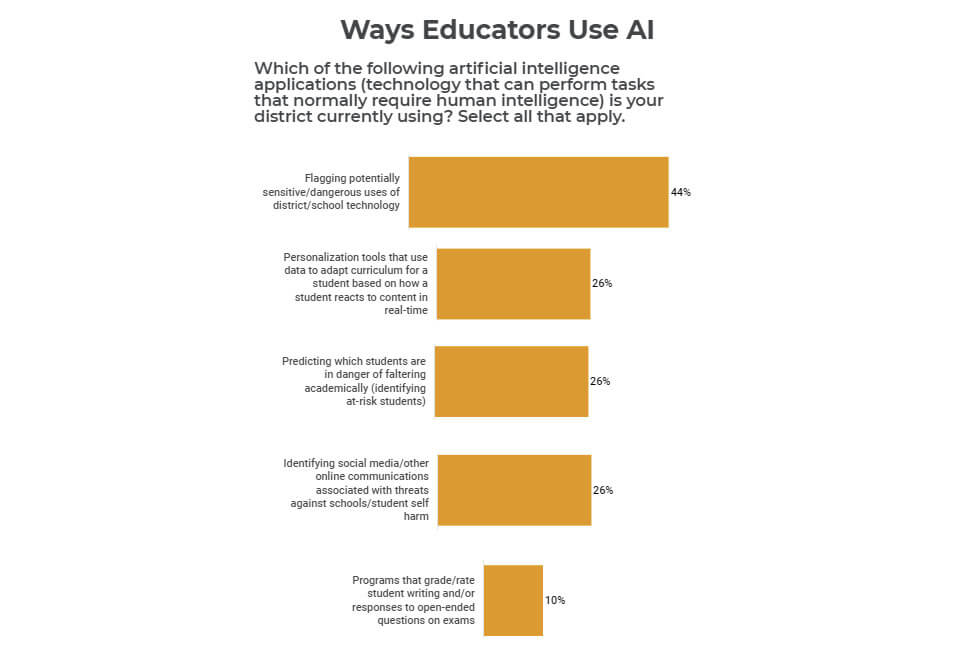
According to the EdWeek Research Center survey (2020) among districts’ school leaders, there are two key areas where Artificial Intelligence in education is already used: school security monitoring, and automatization of the teaching process including personalization of learning.
Automatization of the teaching process to decrease teachers’ average working time
According to a recent McKinsey and Microsoft survey, teachers’ average working time equals 50 hours a week, having increased by 3 percent over the past five years. This results in burnout, high attrition rates, and high teacher turnover.
Also, in the same survey, about a third of teachers said that they wanted to personalize teaching but did not feel that they were doing so effectively at present.
Their biggest barrier is… time.

AI-powered elearning software is a great time-saver for the teachers as it is designed for personalization of teaching:
- AI-based tool for knowledge checking to automatically determine the topics a student hasn’t mastered yet;
- AI-based tool for predicting future proficiency to address knowledge gaps among individuals or even groups of students as early as possible;
- AI-powered tool for building personal learning paths to master them at their own pace throughout the school year.
1. AI-based knowledge checking tool
An AI-based knowledge checker automatically determines which topics in the course a student knows and which ones they don’t know.
A student then can choose which topics they’re ready to learn right now from the topics they don’t know.
The initial knowledge check is a not set of predetermined questions as it used in traditional elearning software.
Actually, each question is suggested based on how a student answered all the previous questions because the AI-based knowledge checker constantly adapts to a student.
If a student answers a lot of questions correctly they see more challenging questions as the AI algorithm pushes them further into the curriculum to see how far their knowledge goes.
A student who is answering questions incorrectly will see more basic questions, the AI algorithm will shift them back through the curriculum to pinpoint their learning gaps.
As soon as a student completes the initial knowledge check, they arrive at the results page.
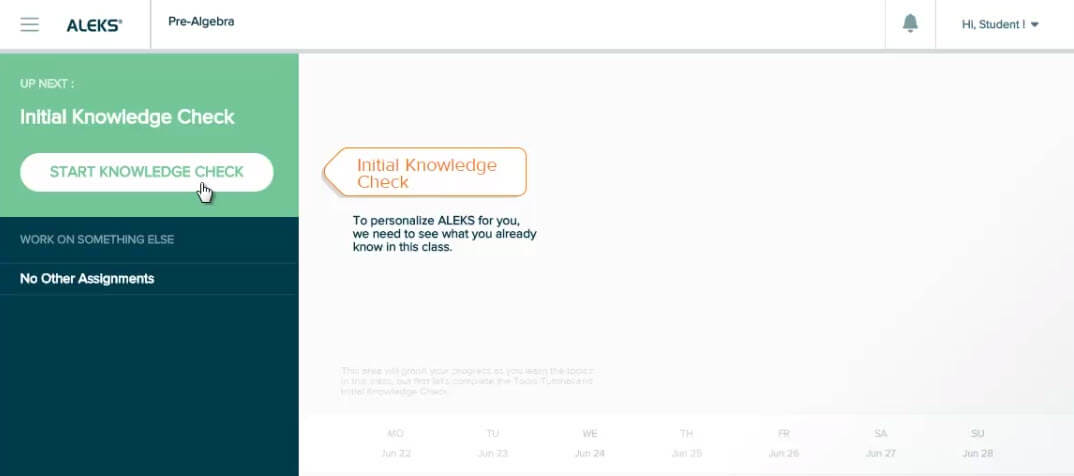

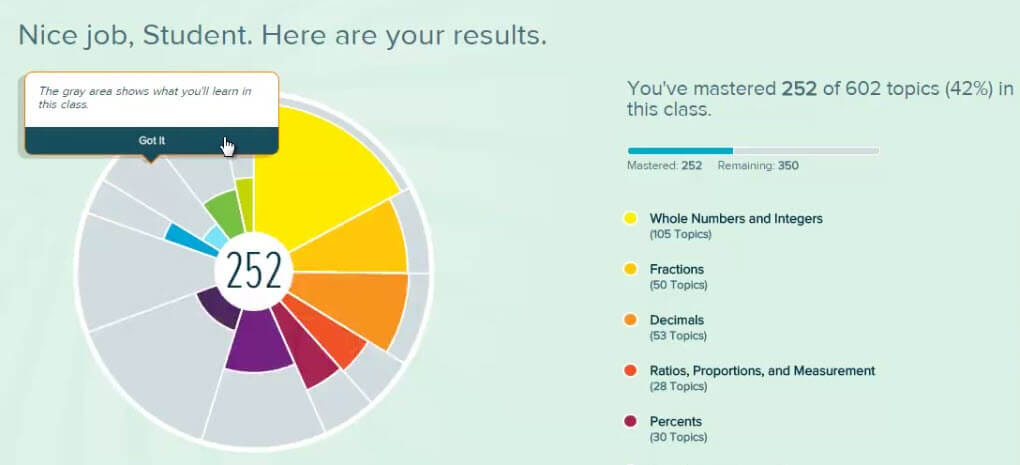 aleks.com
aleks.com
After passing an initial knowledge check, the student can start their own personalized learning path.
2. AI-based tool for predicting future proficiency
This tool can predict future proficiency for year-end state assessments throughout the school year.
Predictions are generated while students are actively engaged in learning, with no additional class time lost to testing.
Teachers can use it to help their students make proficiency gains earlier in the learning cycle, and address knowledge gaps.
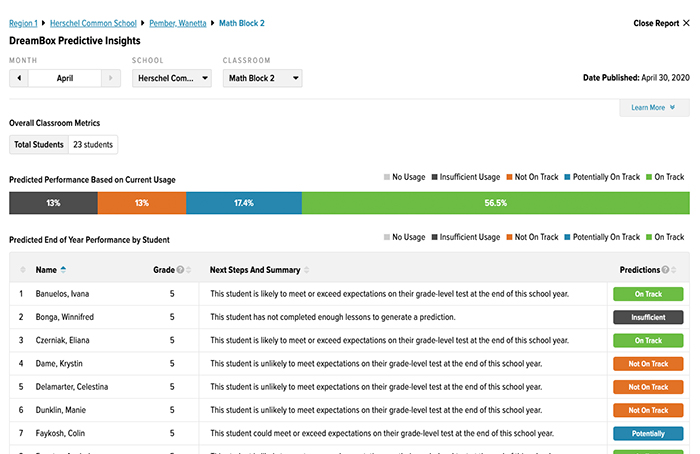 dreambox.com
dreambox.com
The system also might provide alerts to human tutors to inform them of significant events (such as students who keep repeating misconceptions) that may require their intervention or support like one-to-one discussion.
Based on the students’ scores, a teacher can manually group students according to learning needs and manually suggest lesson plans, materials, and problem sets for each group.
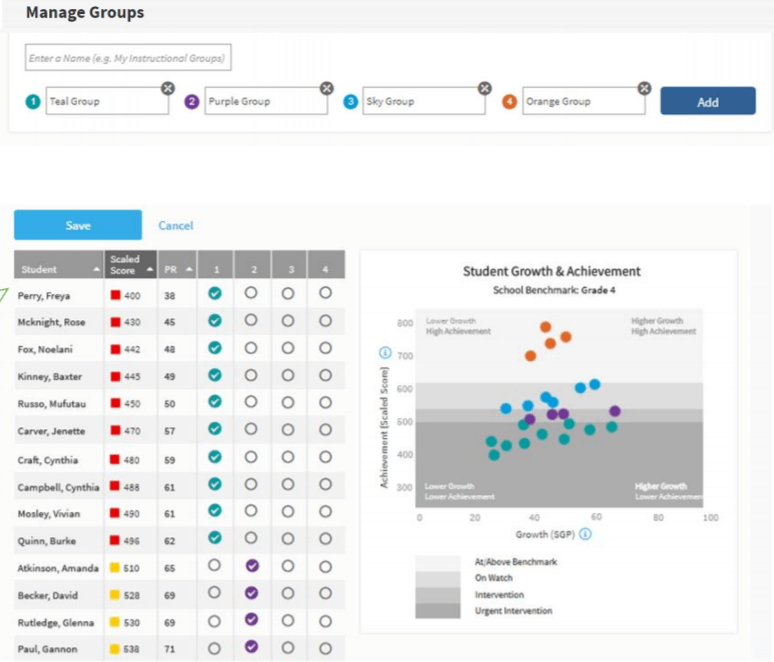 renaissance.com
renaissance.com
3. AI-powered tool for building personal learning paths
After passing an initial knowledge check, students select their most ready-to-learn topic and start mastering it.
If a student puts an incorrect answer, the platform offers a hint. The student can also dig into the detailed explanation by clicking on hyperlinked words that lead to the appropriate reference material.
The AI-based knowledge checker automatically reassesses students with knowledge checks to see what topics they’ve retained. Teachers don’t need to assign these knowledge checks, they will occur automatically once a student has learned a certain number of topics or passed a determined amount of hours in the learning path.
The topics a student does well on, will move to the mastered category, and the topics a student doesn’t do well on, will go back to the learning path to be reviewed again.
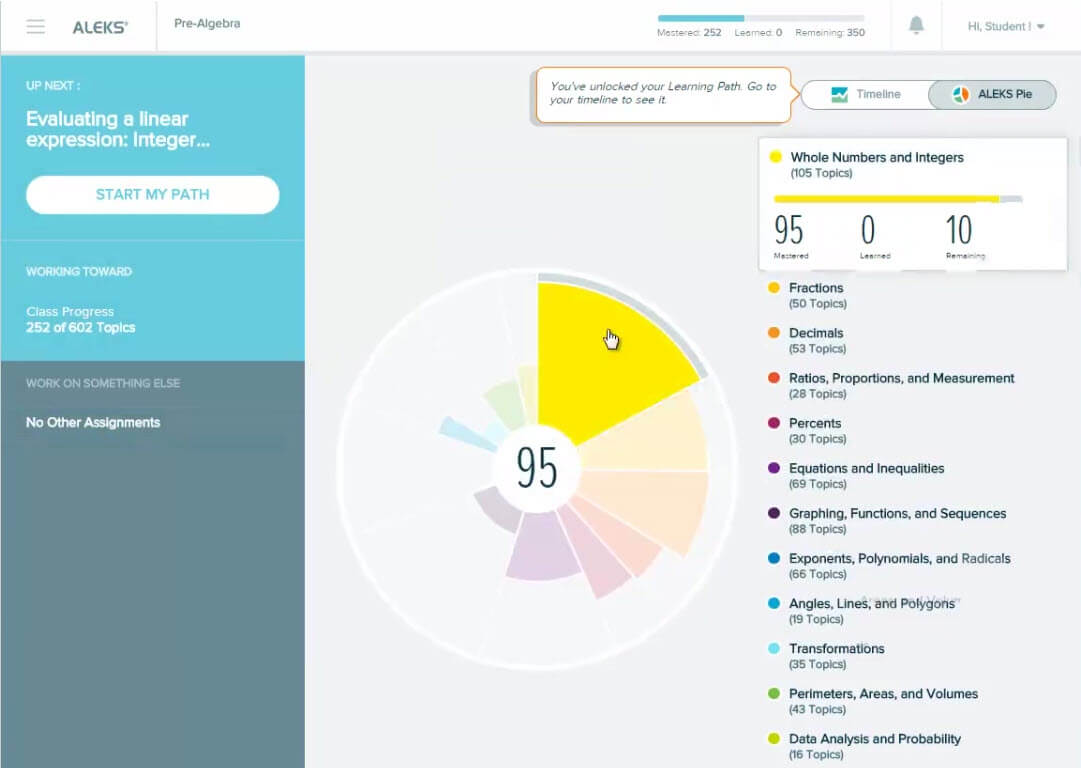
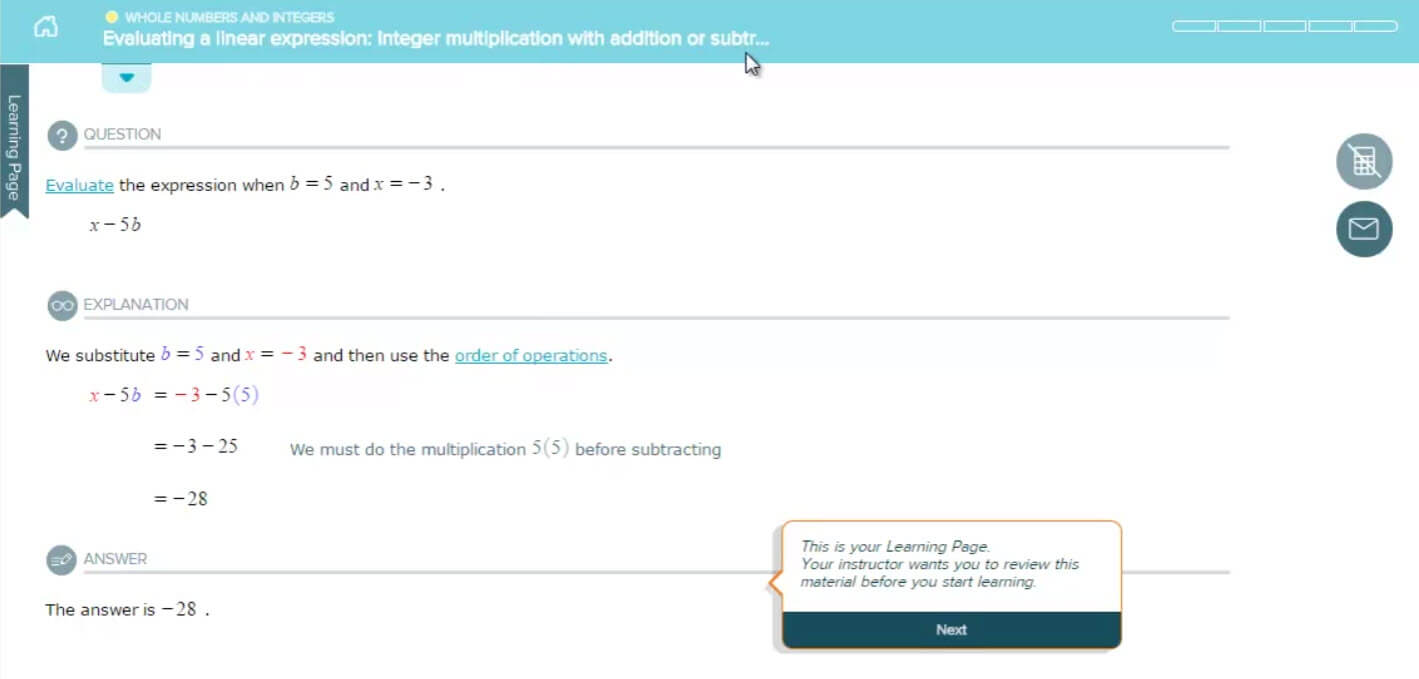

 aleks.com
aleks.com
AI-enabled school security monitoring
AI-powered software for schools is designed to help school administration take a more proactive approach in preventing inappropriate students’ activities:
- AI-powered screen monitoring tool to control students' online activity during the lesson to prevent their distraction from studies.
- AI-based content filtering tool to improve the effectiveness and accuracy of human moderators in their efforts on updating their Internet content filters with new rules.
- AI-based tool for suicide and self-harm risks monitoring to automatically alert parents and school staff members that certain students are looking for potentially dangerous information on the Internet using school network;
- AI-based technology for automatic gun detection to immediately alert the principal, faculty, security, and the police of threats found, before they become violent.
1. AI-powered screen monitoring tool
This type of AI-based educational software helps monitor students during their online classes.
A teacher is able to see exactly what students are doing on their devices in real time, all tabs they have open, and how they interact with the material.
Real-time monitoring of each student’s behavior enables teachers to keep students concentrated on their own work instead of spending time on non-academic web browsing or playing games.
When a student goes off-task, artificial intelligence notifies a teacher. AI could be trained to identify students’ off-task activities using machine learning models for each classroom subject such as English, History, Math, or Science.
The off-task alerts use AI to scan the content of a student’s current webpage and detect whether the content of the page reflects the classroom subject. If the content on a page does not correspond to the classroom subject, the webpage will be considered off-task and a visual alert will be initiated.
This means that even when students are working on homework for another class, AI will identify that a student is off-task.
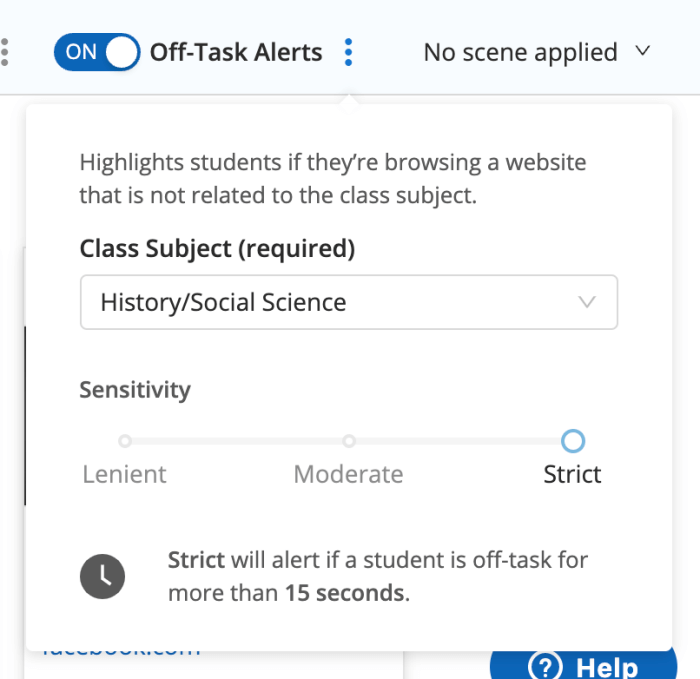
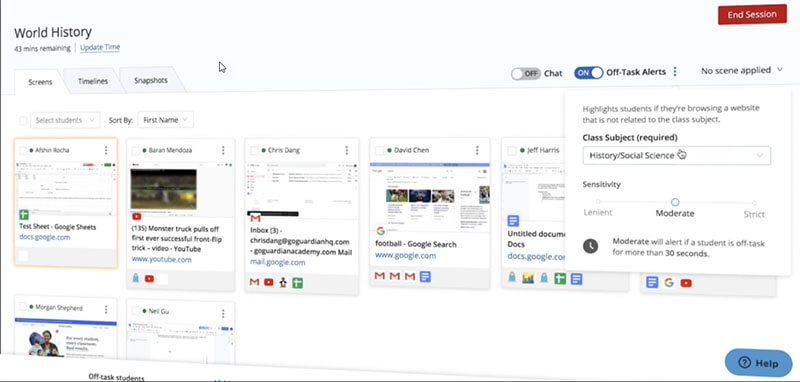
 goguardian.com
goguardian.com
2. AI-based content filtering tool
Almost all schools have a network-level filter to protect school networks, computer labs, teacher computers, etc.
However, students rely heavily on their personal mobile devices and laptops, creating a challenge for IT teams to monitor and filter internet exploration as mandated under the Children’s Internet Protection Act.
The problem can be effectively solved thanks to the AI-enabled cloud-based filtering solution for K–12 schools. It is designed to expand filtering capabilities to all mobile and personal devices connected to school networks.
Unlike traditional content-filtering solutions, AI-based content filtering tools don't require a list of manually gathered websites’ URLs or the ones that match masks like *unblock*, etc.

This filter learns to self-update and block new harmful content.
 deledao.com
deledao.com
In content filtering, machine learning is used in the phases of proactive detection of potentially problematic content, the automated evaluation, and enforcement of a decision to tag/label and remove the piece of content.
Here is an example of AI-powered content moderation within K-12. The “Snake game” will be blocked, while “snakes reptiles” are allowed.
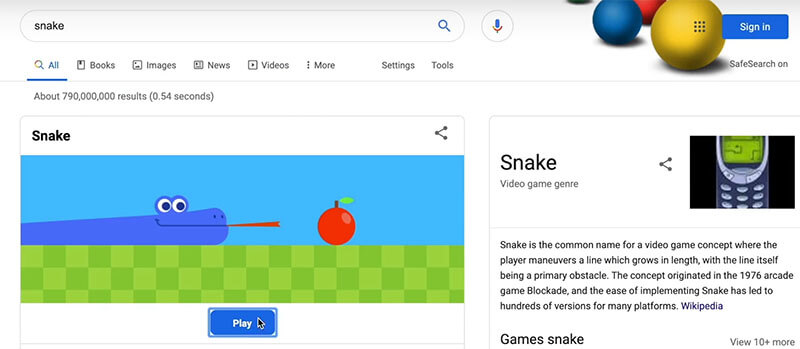
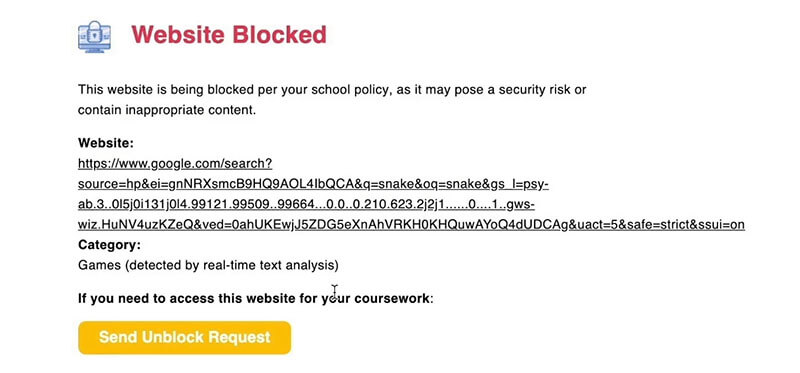
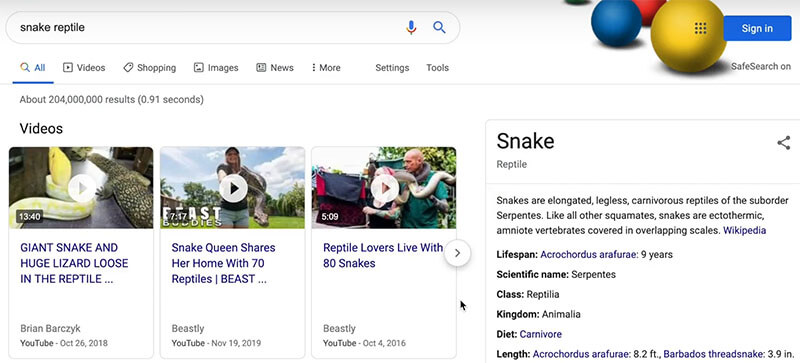 deledao.com
deledao.com
3. AI-based tool for suicide and self-harm risks monitoring
Today suicide is the second cause of death among teenagers. Students may search for suicide or self-harm related content using a school network. When self-harm behavior or suicidal ideation is taking place on school accounts, it may be a headache for school authorities.
It explains a high level of concern (44%) among school leaders related to flagging potentially dangerous uses of school technologies, as mentioned in EdWeek Research Center survey.
The AI-powered security monitoring software is able to detect early signs of suicide ideation from student activities on the net.
It is set up as an additional plugin on the school computers, and AI monitors the status of students’ browsing the Internet on PCs inside the school.
“We learned that one child had planned to commit suicide in the next couple of days — because of the monitoring, we were able to intervene and get him the services he needed.”
Lenon Harvey, Putnam County School District’s director of information services.
The program is monitoring the content of each student's browsing. It automatically captures screenshots and then starts to analyze the content. If it is potentially related to suicide or self-harm, the software automatically generates an appropriate alert for the authorized staff such as teachers, school counselors, etc. as well as parents, if necessary. The educators can also view the browsing history in the screen carousel to review the screens captured before and after the alert was generated.
The AI-powered security monitoring software is also able to recognize the trends related to student’s suicide ideation (for example, the number of requests for such kind of information during the past month) and the phase of the threat, for example, "General suicide research", "General suicide ideation", or "Self-harm and active planning".
Well-trained AI is able to differ activities like “searching for ‘knot on a rope’” (classified as an Aggressive Plan) and “searching for ‘yearly suicidal trend’” (classified as "Searching on suicide as a matter of fact").
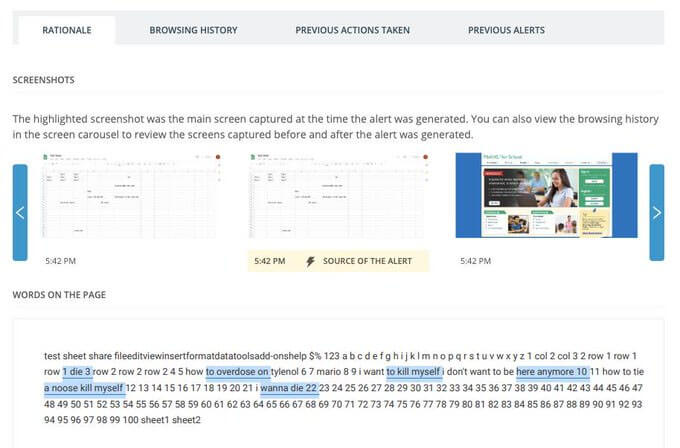
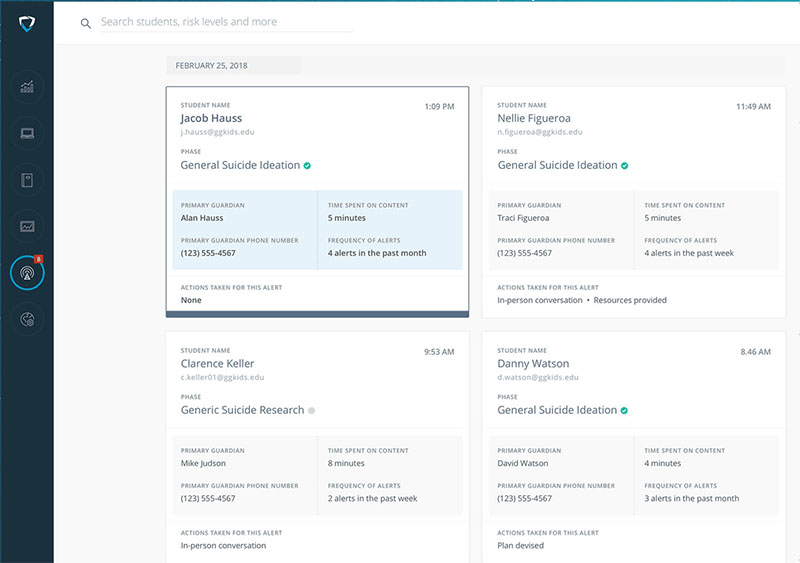
 goguardian.com
goguardian.com
4. AI-based technology for automatic gun detection
Though cameras are already in place at most schools, they give no clear indications of when a school shooting may occur.
By routing school camera feeds to the AI engine, school leaders and officials will be informed when a firearm is detected in surveillance cameras.
The AI-powered software that is running on school surveillance cameras identifies a weapon and sends an alert in less than 3 seconds to the principal, faculty, security, and the local police. The system reveals a shooter’s identity, what weapon they carry, and their location.
Every time a shooter shows up on any camera and a weapon is exposed, this AI technology updates the authorities with a text and a picture of where a shooter is, where the gun is, and how many of them there are.
Such a weapon detection software improves itself with machine learning. It starts to make its own determinations about what is or is not a weapon. The development team actively trains the algorithm, which is going to result in an improved rate of response, and decreased “false-positive” rate.
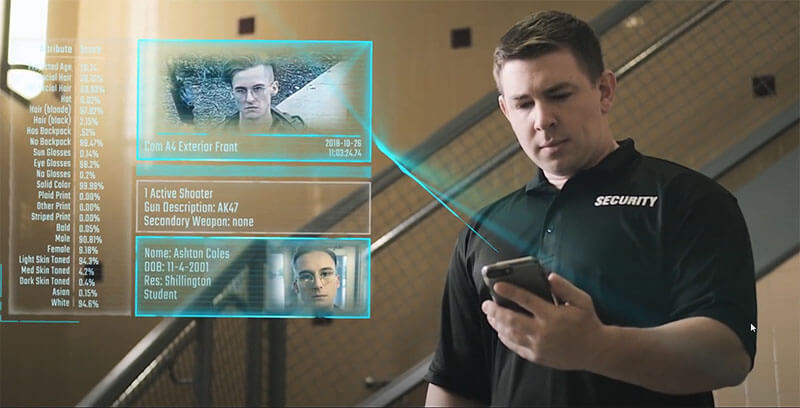
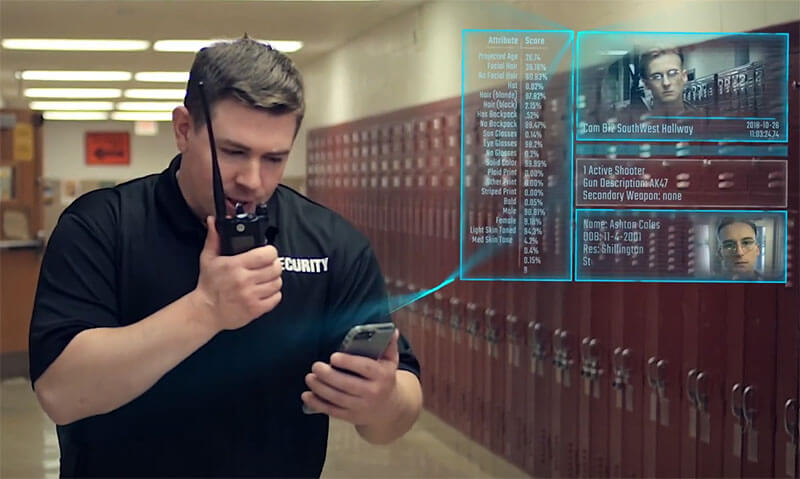 zeroeyes.com
zeroeyes.com
What’s next?
During the past years, we have developed tens of complex eLearning apps/sites for clients who are looking for IT/development resources. Check out this case study as an example (Supplemental Education for K-12: Game-based eLearning Platform For Selling Math Training for Kids).
Our eLearning experts with 15+ years of expertise will advise you what AI-based tools to implement to revolutionaze your learning environment. Talk with eLearning expert!
Rate this article
Recommended posts
Portfolio

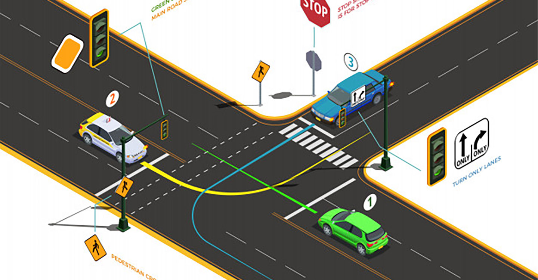
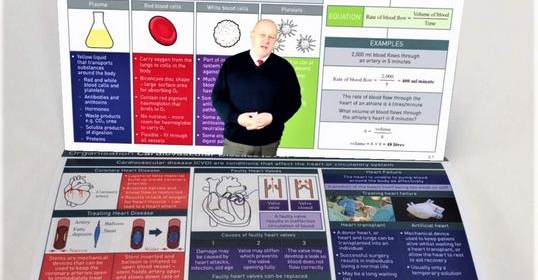
Our Clients' Feedback






















.png)
.jpg)
.jpg)
.jpg)
.jpg)
.jpg)
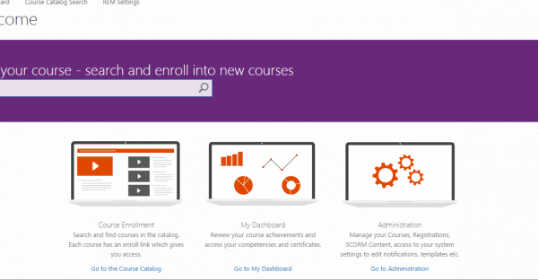
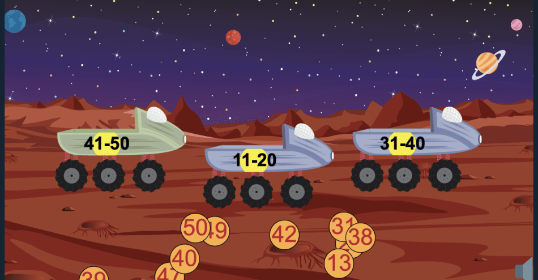
















Belitsoft has been the driving force behind several of our software development projects within the last few years. This company demonstrates high professionalism in their work approach. They have continuously proved to be ready to go the extra mile. We are very happy with Belitsoft, and in a position to strongly recommend them for software development and support as a most reliable and fully transparent partner focused on long term business relationships.
Global Head of Commercial Development L&D at Technicolor